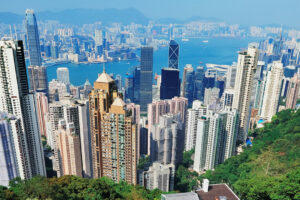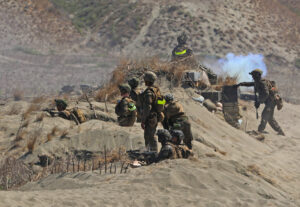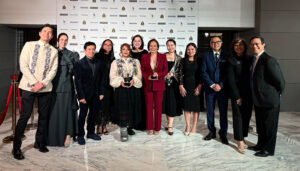
Industrial policy for the Philippines: A tale of 4 Tigers
(Part 2)
During the second half of the 20th Century, industrial policy was given a lot of prominence in the efforts of some East Asian countries to “lift themselves from the bootstraps.” Select countries in Asia took seriously the promotion of certain industries judged to be important for growth, modernization, poverty eradication, or national security by implementing a set of government strategies, laws, and programs aimed at shaping the structure of the economy. This usually included such tools like tariffs or protection for infant industries; subsidized credit or tax incentives; direct state investment in strategic sector; support for research, training, and infrastructure; and especially export-promotion measures. The essence of industrial policy is for the government to actively guide and accelerate industrialization, rather than leaving everything to the free market.
Four territories in East Asia stood out in the successful use of industrial policy: Singapore, Taiwan, Hong Kong, and South Korea — usually referred to as the Four East Asian Tigers. During the second half of the last century, they followed distinct but overlapping industrial policies. All four experienced rapid industrialization, high GDP growth, and poverty eradication. Their approaches, however, reflected different political, institutional and geographical circumstances.
They were all poorly endowed with natural resources, in contrast with their Southeast Asian neighbors like Indonesia, the Philippines, Thailand, and Malaysia. However, during the period after the Second World War all of them were enjoying a baby boom that endowed them with young and growing labor forces. For example, South Korea’s population increased from 20 million in 1950 to 32 million in 1970 while Taiwan’s grew from 7.6 million 1950 to 14.7 million in 1970. Their leaders were very conscious of the fact that their respective economies had to provide employment opportunities for their young and growing population. This explains why their respective governments wisely chose a labor-intensive, export-oriented path toward economic progress.
In the case of South Korea, after the armistice agreement in its war with North Korea, its policy makers under the authoritarian leadership of Park Chung Hee, initially protected domestic industries, focusing on light manufacturing, such as textiles, toys, food, and other consumer goods. This was the import-substitution stage of industrialization (1950s to early 1960s). Then followed the export-oriented stage (1960s to 1980s). There was a shift toward the promotion of exports through strong state intervention. The government provided subsidized credit, an undervalued currency, tax incentives, heavy infrastructure support, and protection for firms that achieved export targets. From light manufacturing, there was a deliberate push towards heavy and capital-intensive industries such as steel, shipbuilding, automobiles, and petrochemicals. Credit was especially directed to the large conglomerates called chaebols such as Hyundai, Samsung, Daewoo, Hanjin, SK Group, LG Group, and Lotte Group. The final stage involved investments in technology and R&D. Policies promoted electronics, semiconductors, and IT, aiming at global competitiveness. The result was that the economy was transformed from agrarian poverty to a leading high-tech and industrial power, now considered as a First World economy with a per capita income of more than $30,000.
Then there was Taiwan that started with a thorough-going agrarian reform program that distributed large tracts of land for small farms that were made highly productive through significant government support of infrastructure spending (especially farm to market roads and irrigation facilities), cooperatives development, agricultural extension services, and ready access to credit. As food security was given the highest priority, the initial industrialization was also based on import substitution focused on light industries. Quickly following the short period of import substitution was a shift towards export-oriented industrialization (1960s to 1970s), with the government creating export processing zones and promoting small- and medium-sized enterprises (SMEs) in labor-intensive manufacturing such as in textiles, garments, toys, plastics, furniture, etc. In the 1980s and 1990s, the focus was on electronics, semiconductors, and precision industries through state sponsored research institutes and public-private collaboration. This culminated in a proliferation of high-tech industrial parks such as the Hsinchu Science Park which nurtured enterprises like TSMC, creating the semiconductor powerhouse that Taiwan is famous for. Such an industrial policy resulted in Taiwan becoming today a flexible, SME-driven economy that became a global leader in electronics and semiconductors. It is also a leader in the production of high-value agricultural products with the use of advanced technology.
The Hong Kong model stands out as the only one among the four tigers to adopt a laissez-faire or free market industrial policy. Unlike the other tigers, Hong Kong pursued minimal intervention, following classical (Adam Smith) policies under British colonial rule. Like the other three, it started industrializing with labor-intensive manufacturing (1950s to 1970s) with industries like textiles, garments, toys, wigs, furniture, etc. using cheap migrant labor and operating in open markets. In the 1980s and 1990s, as real wages rose and manufacturing relocated to mainland China, Hong Kong transitioned into a global financial and service hub, with little direct state planning. In contrast with the other three tigers, Hong Kong showed that industrialization is possible under free-market conditions. It also demonstrated what infrastructural and institutional supports are required to become an international financial hub.
Belonging to the Southeast Asian region, Singapore showed its ASEAN neighbor how to attain First World status through a state-led, Foreign Direct Investment-driven economy. Lacking a large domestic industrial base, Singapore — under the authoritarian leadership of Lee Kuan Yew — actively courted foreign multinationals through very generous tax breaks, world-class infrastructures, good governance, and political stability. From the very start, its industrial policy was that of export-orientation, quickly integrating into global production chains, focusing on electronics, petrochemicals, and later pharmaceuticals. Its high-quality infrastructure enabled it to become a major tourism destination in Asia. Government-linked corporations (GLCs) such as Singapore Airlines and port operators ensured national control of key sectors. There was strong emphasis on high-quality basic and tertiary education as well as in skills training, leading to the growth of high-value industries.
To summarize, South Korea and Taiwan grew on the basis of strong state intervention, export-led industrialization, culminating with the introduction of high-tech industries. Singapore adopted a highly state-directed industrialization strategy heavily dependent on foreign direct investments especially in services and high-tech sectors. Hong Kong had minimal state intervention, with heavy reliance on services and finance. Also notable was the high percentage of their GDP (5-8%) that these countries spent on public infrastructure. Also, a common strategy followed by all four was to move quickly away from import substitution to export orientation, unlike the Philippines that lingered too long in import substitution which was its undoing.
(To be continued.)
Bernardo M. Villegas has a Ph.D. in Economics from Harvard, is professor emeritus at the University of Asia and the Pacific, and a visiting professor at the IESE Business School in Barcelona, Spain. He was a member of the 1986 Constitutional Commission.



